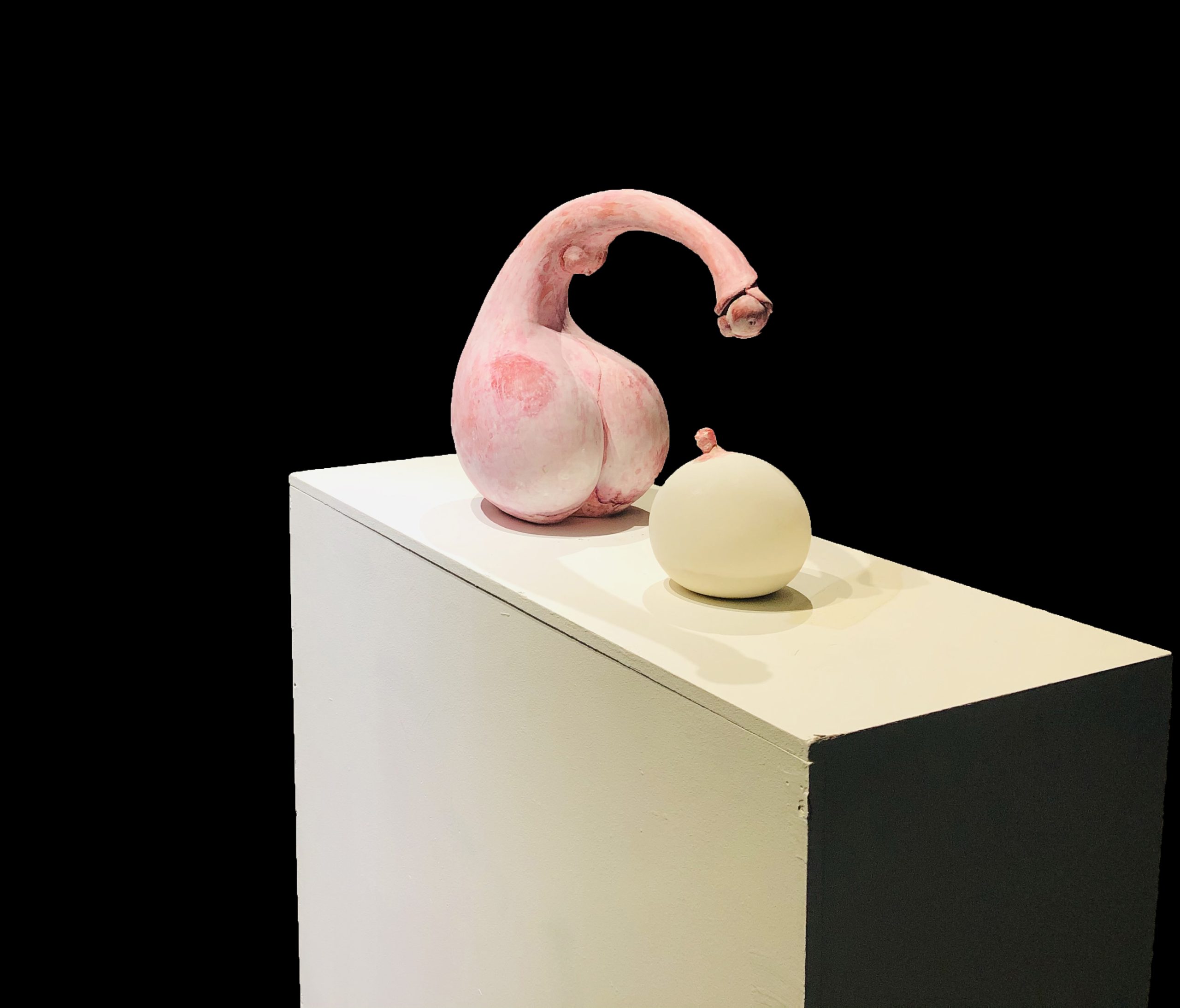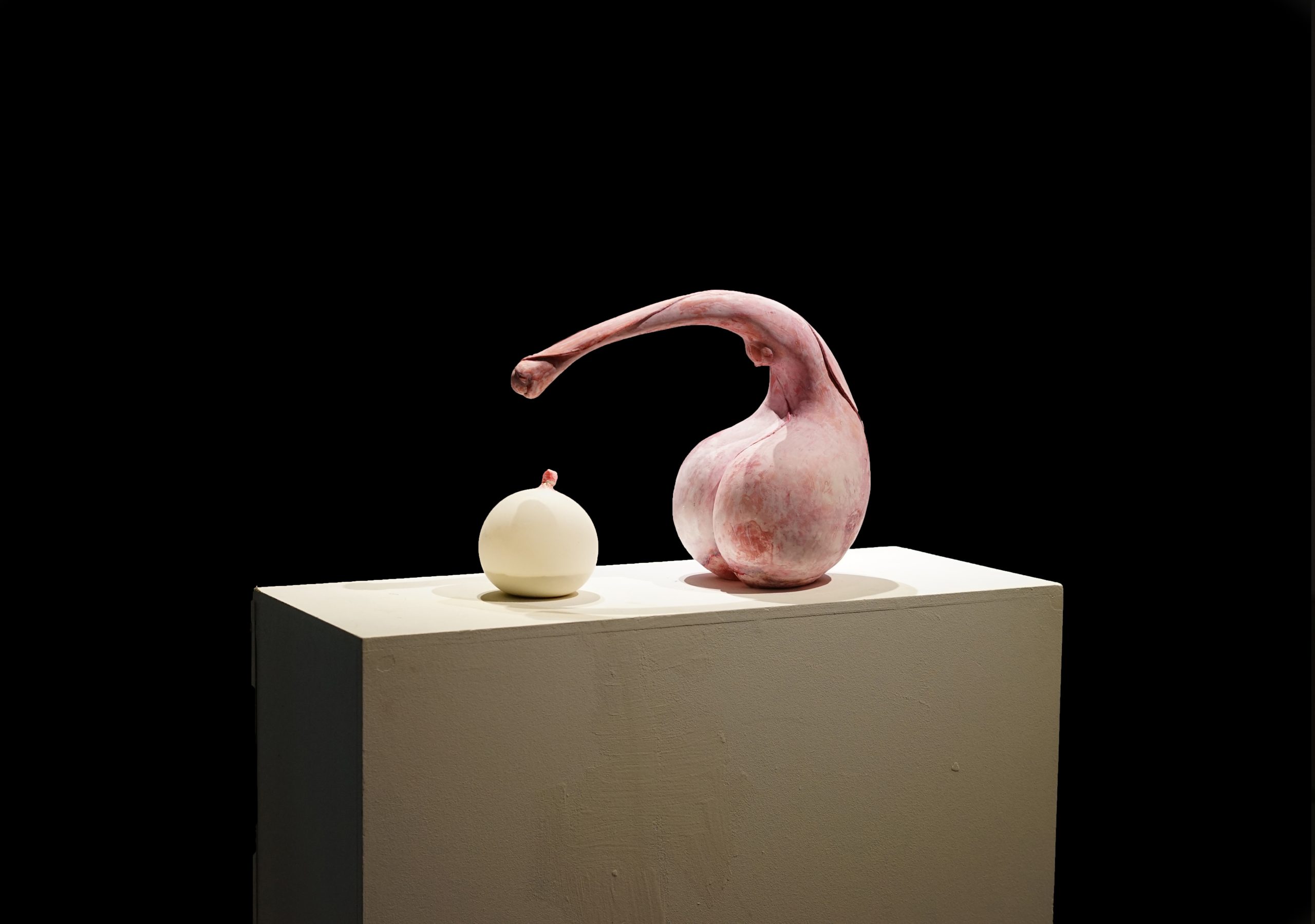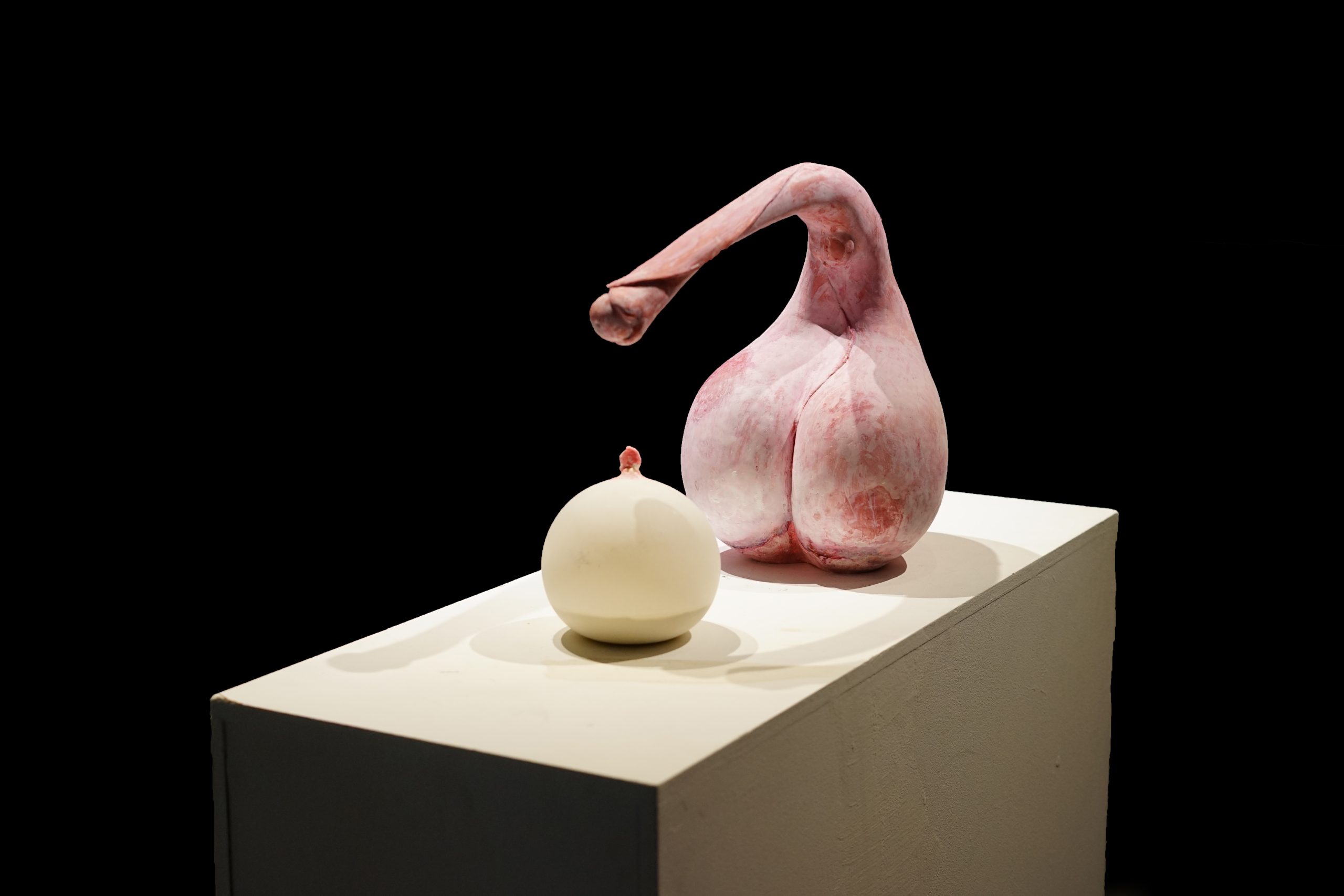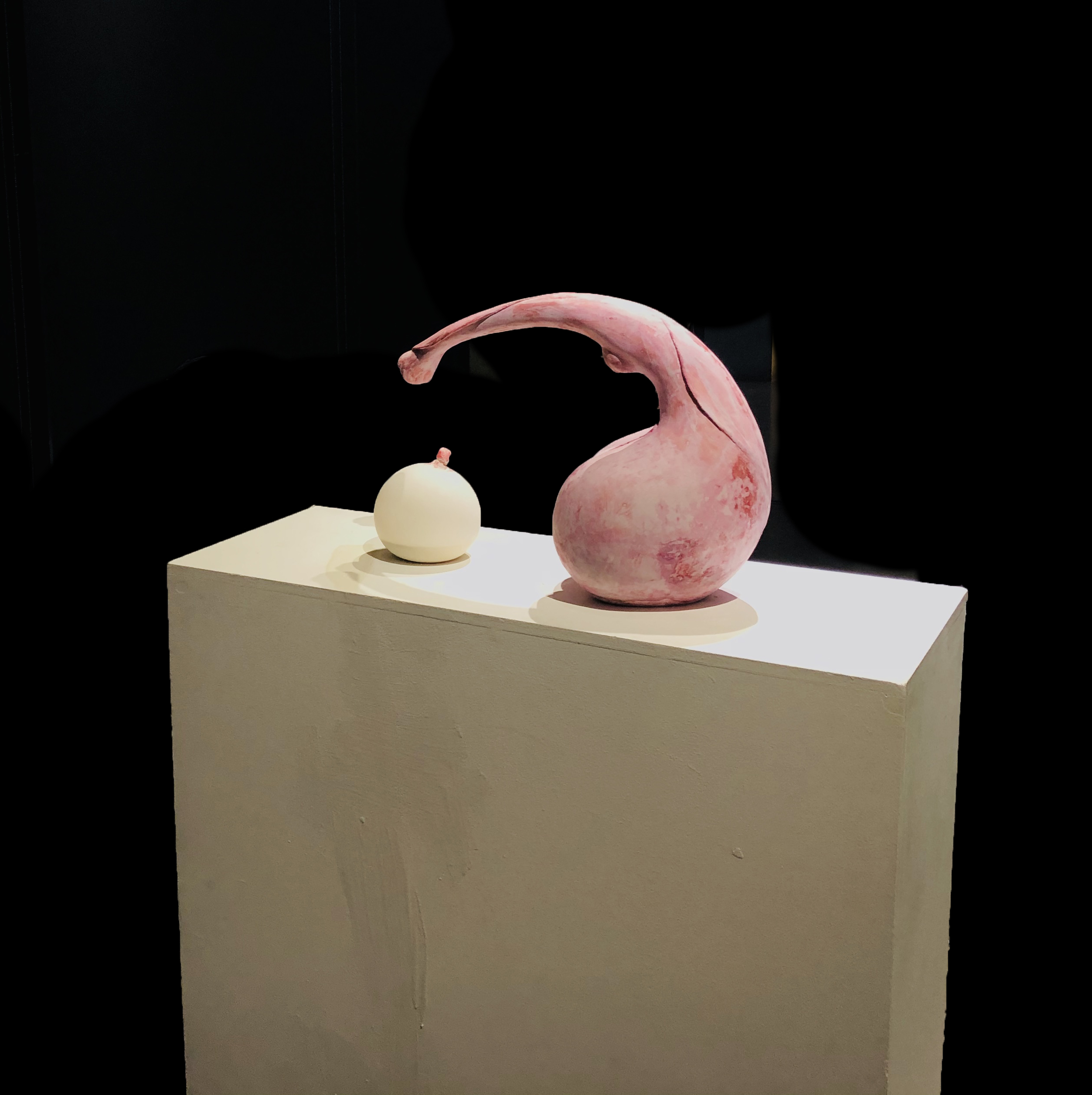Sculpture Book of Disquiet
15. January 2020






Book of Disquiet
2020, plaster, 70x50x40cm
In the article Encounters with an-Art Thing, Jane Bennett refers to what Lambros Malafouris calls “material engagement,”. She writes that sometimes a nonhuman thing will become an extension of a human body and sometimes vice versa: “There are no fixed agentic roles in this game.”[1] The extension of the human body makes the audience’s body being captured and utilized, the “Utility Relation” is one of the faculty presented in this work, in terms of the dimension that it is the extension of the human body.
The sculpture looks sexual and surrealistic hybrid object, which is partly corporal, partly looks like a plant. The shape of this work has a vulnerable and obscure characteristic of the erotics, which indicates a sense of uncertainty within the hybrid of different parts of the body: The front stick can be seen as part of a penis, but also can be interpreted as a part of the bones, like the end of the bone, or elbow, or like a bone fitting into the socket. It combines with the shape of the breast, as well as the bum front in the main parts. As Kate Davis comments: “The form itself is quite loaded already–amodernist coded sculpture looks like plants, in one way it is suggestive, in the other way it has a disguise.” So it can become permissible in public space and not being censored. This is an imagined creative, dream-like, surrealistic form.
The theme of the work: Book of Disquiet is meant to use an inviting and seductive subject of supernormal stimuli to provoke people’s sexual desire. Compared to the contemporary erotic morphologies, the provoked human desire induced in my work is meant to amplify people’s perception toward the environment in public space, rather than expressing or representing desire itself. By bringing the work into different urban spaces, it serves as a subtle way of reflecting people’s feeling towards the public space, which serves as Sylvia Wynter’s non-symbolic representation[1] to raise the awareness as the Subaltern class. In this sense, the raised sense of subaltern class who are incapable of expressing their own interest, can be provided with caring and an opportunity to speak out even only with their physical response.
[1] Katherine McKittrick, ed., Sylvia Wynter: On Being Human as Praxis (Duke University Press, 2015), https://doi.org/10.1215/9780822375852.
[2] Jane Bennett, “Encounters with an Art-Thing,” Evental Aesthetics 4, no. 1 (2015): 71–87.